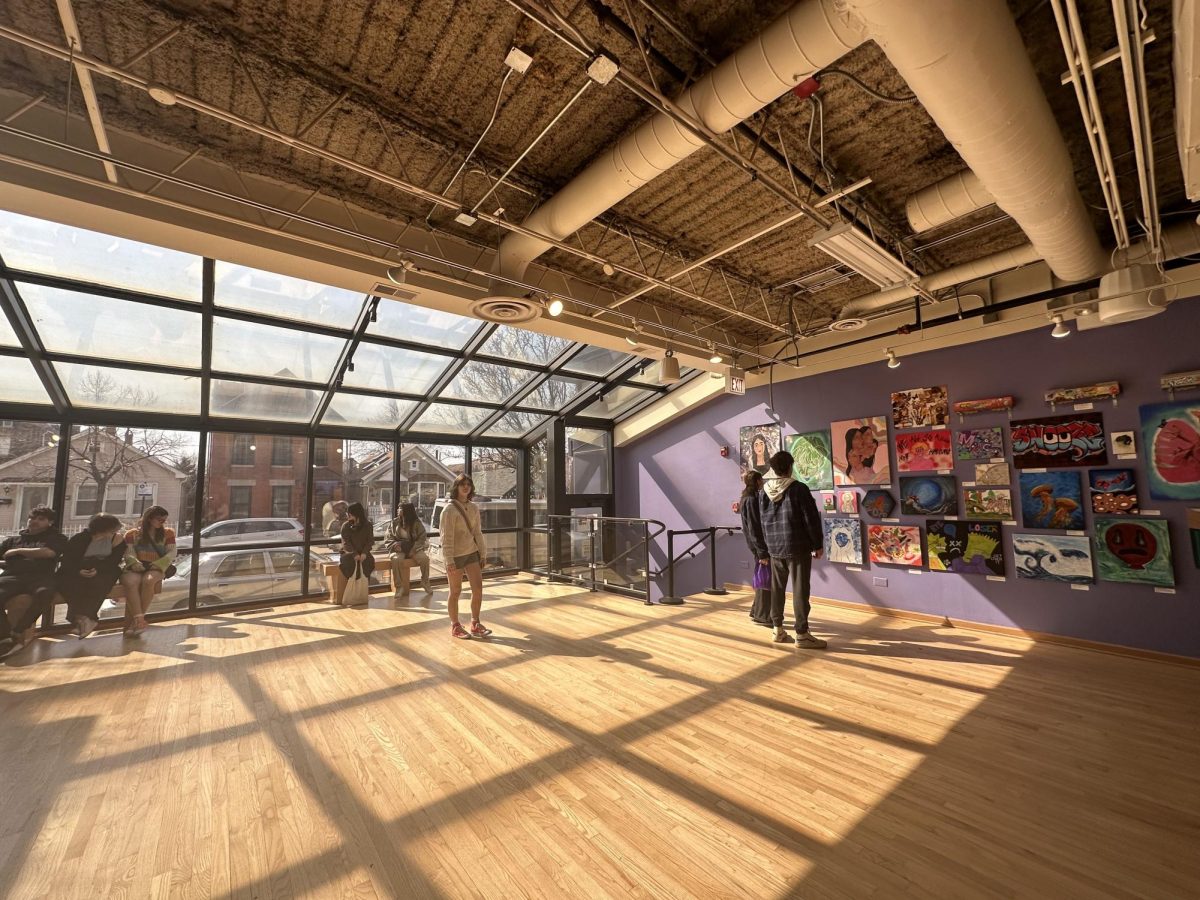In a classroom, students are often restricted to learning via images on a whiteboard or reading a textbook. However, field trips can offer students a new perspective, allowing them to engage with class material up close.
The junior Spanish classes went to the National Museum of Mexican Art in Pilsen, Chicago on March 13. According to Elise Katter, Spanish teacher, the students are the first to go on the field trip since the COVID-19 pandemic. Katter says that the field trip allows students the opportunity to see the artwork of Mexican and Mexican-American artists, which ties into what they have been learning in class.
“Many of [the students] have already been to the Art Institute [of Chicago] or are just more likely to go to the Art Institute. There aren’t as many students who are even aware of museums like this one,” Katter said. “We thought this was a really fun and unique experience for them to be able to go and [since] our unit is titled, ‘Art reflects society,’ I can’t think of a better thing to do than go visit a museum of Mexican art in a highly Mexican neighborhood.”
With the museum’s proximity to local Spanish speaking communities, Katter adds that the field trip allows students to “have an experience that that was closer to home and where they could see some of the concepts we’ve been studying in our unit […] out in real life with people who have a closer connection to the community that we live in” as well as to the Spanish language.
Likewise, Likhith Donapati, junior, enjoyed that he got to “see actual Latin American art instead of looking at it through the screen.” The museum showcased a large variety of different art, from indigenous and religious paintings to more modern and abstract pieces.
“[The art] was [from] throughout the decades, so I think the earliest one that I saw was [from the] late 1800s and then all the way up till a few months ago,” Donapati said. “They have an institute there for kids, and there were really cool pictures […] and really good drawings from kids our age. [There] was a cool skateboard photograph and the dude that took that was actually 16.”
Besides the range of subjects the artworks depicted, which Sasha Bryukhova, junior, says helped her “get a feel for the Mexican culture,” the environment of being at the museum allowed her to have a deeper understanding of the composition of the works.
“I was able to look closely and look at the detail that goes into all these paintings. There’s one [that] if you look up close, you can see the paint isn’t flat on the canvas because that’s the technique that they used. Otherwise, [from] pictures online, I wouldn’t be able to see the details and how the art was created,” Bryukhova said.
Similar to Bryukhova, Donapati says that the experience helped him expand his appreciation for Mexican art and made him “realize how much time each painting takes” to achieve the high level of detail the works display.
“One of them [was] made with thousands, probably even a million beads, little by little crafted together on a tile and then many, many different tiles put together,” Donapati said. “So a lot of these artworks made me appreciate the fact that they take time and you have to be very patient with the process.”
Along with visiting the museum, the students also went on a guided tour of the nearby neighborhood to see their murals. This provided them with insight into the lives of local Latin American residents, as well their cultural styles.
“One of them had Frida Kahlo on it with wings, and one depicting a lot of different types of flowers. There was even a cello player on there actually, and it was just really different [because] you wouldn’t expect these types of murals,” Donapati said. “You know how Coco has all these different animals with bright features? It really looked like that. It was the whole mural with different animals on it. You could tell that [the murals] were really Latino because everything like everything is really bright and neon.”
After their viewing of the murals, according to Bryukhova, the students went to a Mexican restaurant, where they were served dishes of Mexican heritage, giving them further appreciation for the culture by further immersing them in it.
“You [could] get either burritos or tacos or what I got, the torta,” Bryukhova said. “I think that was fun, just sitting there with my friends and getting a taste of Mexican culture.”
In addition to providing them with this “taste of Mexican culture”, Katter emphasizes the ways in which this field trip has furthered their knowledge of the Spanish language and the Mexican American experience.
“In another language, it’s beneficial to be able to describe [and] explain. We’re also moving into higher levels of expressing opinions than just ‘I like it,’ ‘I don’t like it,’” Katter said. “We’re also connecting the art that you see with the story behind it, or the artist’s personal experience in their own life, which I think changes the way you look at a piece. It’s an attempt to communicate something in a way that words are insufficient. A lot of the art at the museum is sort of an ongoing conversation [on] what it means to be Mexican American.”




